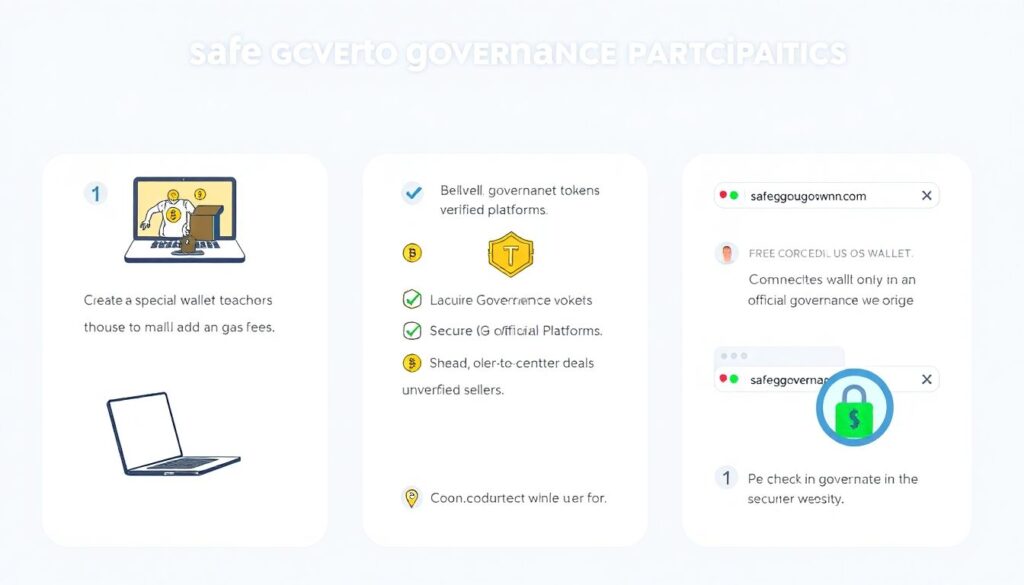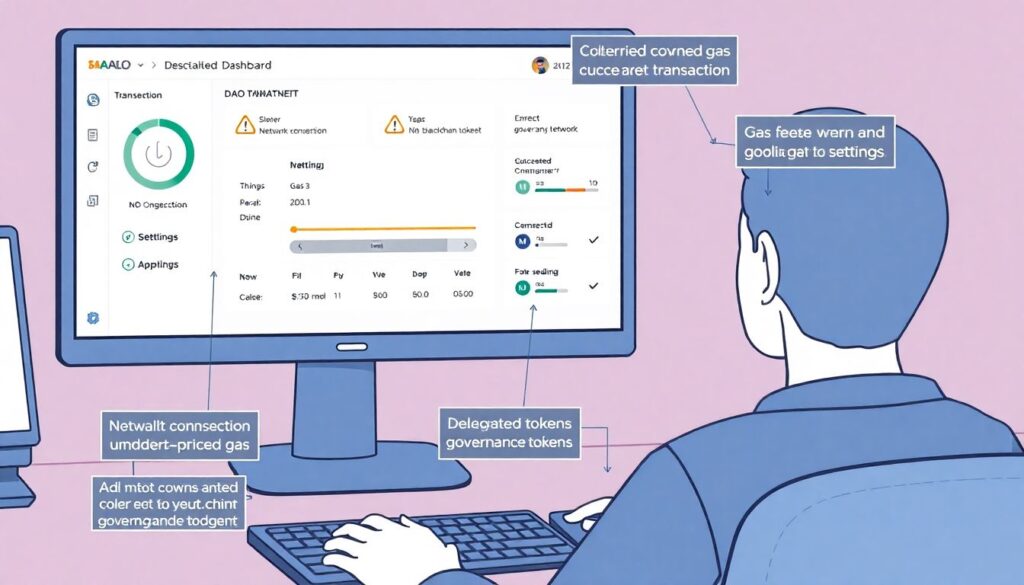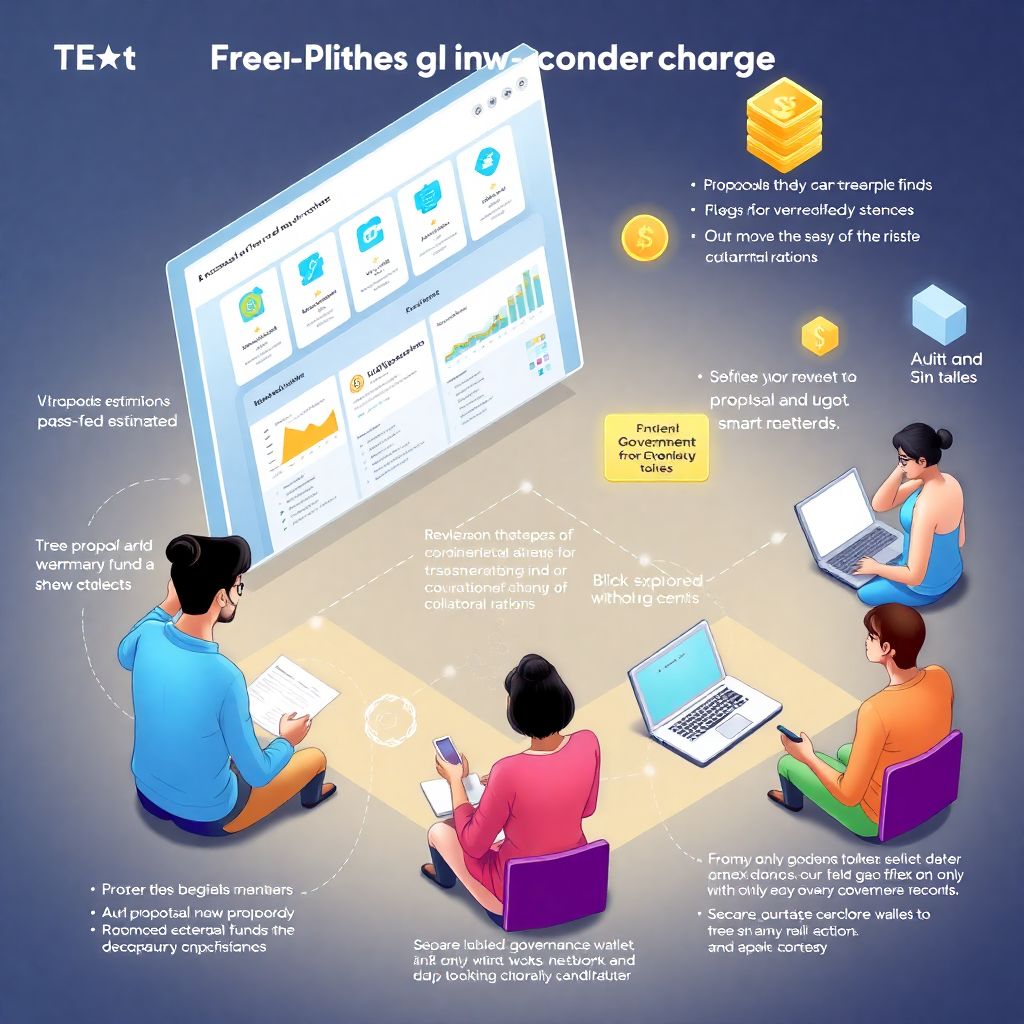Why on-chain governance matters for new users

On-chain governance sounds scary at first: wallets, proposals, tokens, smart contracts. In reality it’s just a structured way for people who hold governance tokens to steer a protocol without a central boss. For beginners, the main risk is pressing the wrong button with real money at stake, so you need a clear routine. Modern on chain governance platforms for beginners try to hide the complexity, but they still rely on the same logic: your wallet signs messages, the network records your vote, and proposals change parameters or send funds if they pass. Understanding this flow is the foundation for every safe interaction you’ll make later.
Real-world cases: wins and painful lessons
Consider a small DeFi protocol where a new yield strategy looked amazing on paper. A newcomer saw the buzz in Discord and voted “yes” without reading the smart contract audit. The proposal passed, a bug was exploited, and the treasury lost a big chunk of funds; voters couldn’t be blamed legally, but the lesson was harsh. Contrast that with a major DAO that rejected a lucrative partnership because researching members found hidden lock-up clauses. Their cautious on-chain voting preserved both liquidity and reputation. These opposite cases show why “slow, skeptical and documented” beats “fast, hyped and blind.”
Necessary tools for safe participation
To use the best dao governance tools for crypto investors without unnecessary stress, start with your wallet. A reputable browser wallet or hardware wallet is non‑negotiable; ideally you’ll keep a separate “governance wallet” with only governance tokens and a small gas balance. Add a trusted block explorer to verify proposals directly on-chain, not only through user interfaces. Bookmark official links to your DAO’s forum, Discord and governance dashboard instead of clicking random links from chat. For extra safety, use a separate browser profile or device for voting activity, reducing the chance that a shady extension signs something you never intended.
Choosing beginner-friendly platforms
If you’re new, it makes sense to look for beginner friendly dao platforms with governance tokens that explicitly explain how their processes work. Interfaces that show clear proposal stages, estimated gas fees and your voting power reduce the chance of misclicks. Many secure on chain voting solutions for defi users display warnings when a proposal touches the treasury or changes critical parameters like collateral ratios. Prefer DAOs that publish human-readable summaries alongside technical payloads, and that archive previous votes so you can study how earlier decisions played out over time. A transparent history helps you learn the culture before you ever cast a vote.
Step-by-step: how to participate safely

1. Create or choose a wallet dedicated to governance and fund it with a small amount of native tokens for gas.
2. Acquire governance tokens through official channels; avoid over-the-counter deals you can’t verify.
3. Connect your wallet only on the official governance site, then double-check the URL and SSL certificate.
4. Before voting, read the full proposal, community comments and any linked audits or risk reviews.
5. Simulate the transaction on a testnet or with “dry-run” tools if available.
6. Vote only when you understand both the upside and what could go wrong.
From reading to proposing: a gentle progression
Your first month should be mostly observation. Lurk in calls, read past proposals and follow how core contributors reason about risk. As you gain context, start with low-impact votes like signaling proposals that don’t move funds. This lets you practice how to participate in blockchain governance safely while the stakes for mistakes stay low. When you finally draft your first proposal, reuse templates from previously successful ones and seek feedback in the forum or Discord. Many DAOs now require off-chain “temperature checks” before an on-chain vote, which gives you a buffer to fix unclear wording or flawed parameters.
Troubleshooting common technical issues

Technical friction is normal. If a vote won’t go through, first check network congestion and gas settings; underpriced gas can make a transaction hang for minutes. Confirm that your wallet is on the correct network and that your governance tokens are actually delegated to your address, otherwise your vote may show as “zero weight.” When a UI bug hides buttons or proposal data, compare with the raw contract information on a block explorer or alternative interface. Many best dao governance tools for crypto investors provide multiple front ends reading the same contracts, which lets you distinguish between UX glitches and real on-chain problems.
Security red flags and how to react
Some problems aren’t bugs but attacks. Be wary of proposals that appear suddenly with very short voting windows, especially if they move a large portion of the treasury or grant emergency powers. If your wallet suddenly shows unknown token balances or random “airdrop governance tokens,” do not rush to interact; these can be trap tokens designed to lure you to malicious sites. Before voting on anything controversial, cross-check announcements on at least two official channels. If you suspect a compromised multisig or governance module, abstain from voting and focus on amplifying alerts rather than experimenting alone.
Building a personal safety checklist
Over time, turn your routine into a simple checklist you follow mechanically. For instance, never vote while distracted or on mobile data in public places. Always read at least one critical comment on a proposal before deciding, even if you agree with the authors. Screenshot or note down key proposal IDs so you can verify them later on a block explorer. Many secure on chain voting solutions for defi users integrate with notification bots, helping you track when voting starts or ends without relying on random tweets. A consistent, boring process is your best defense against both honest mistakes and deliberate manipulation.

